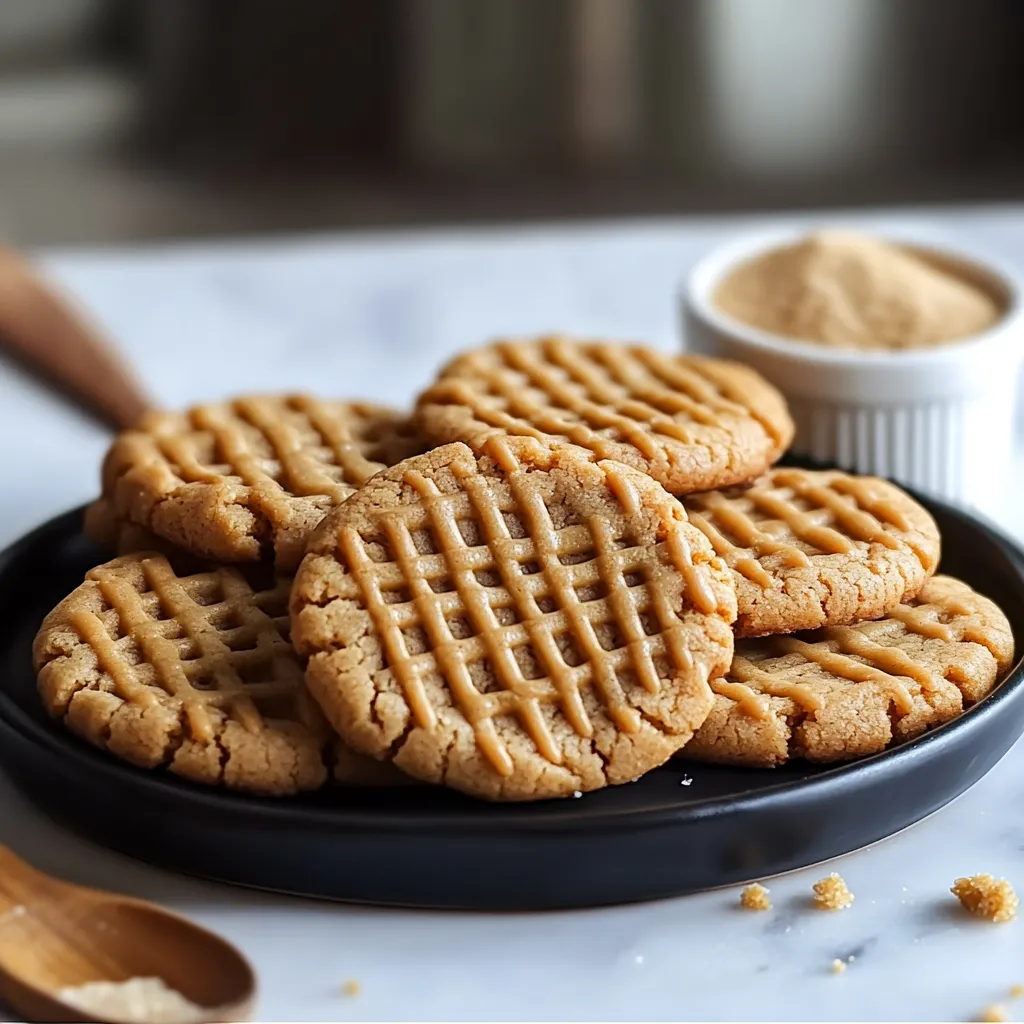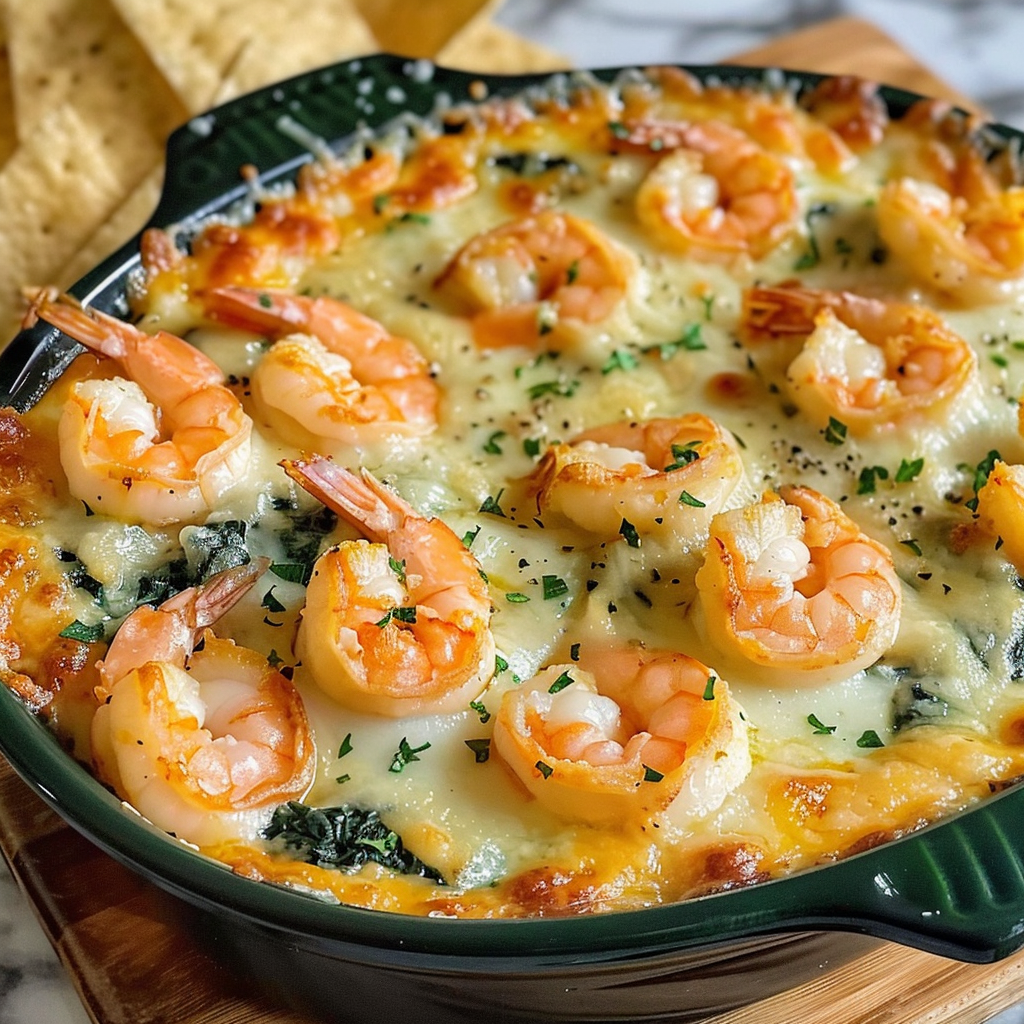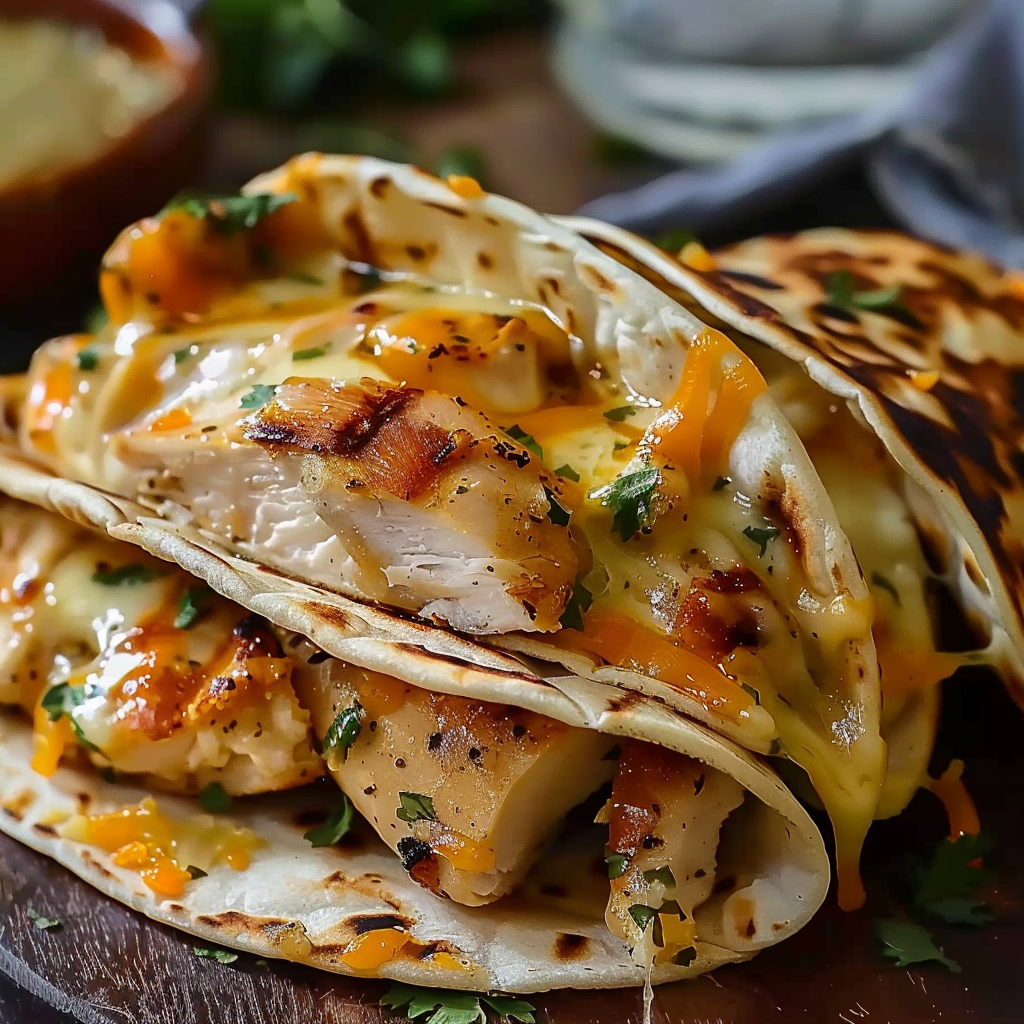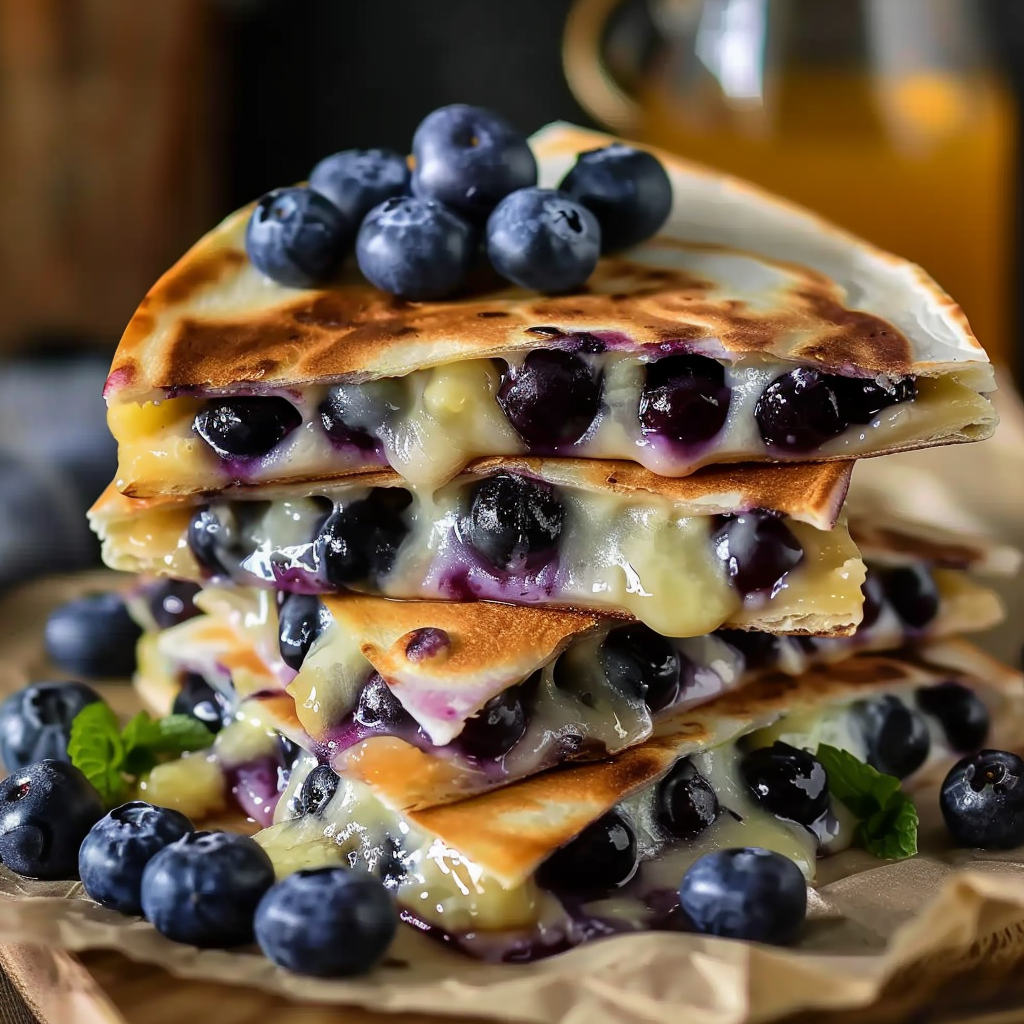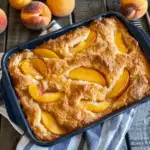Peanut butter cookies have long been a beloved classic in the world of homemade treats. These cookies stand out for their soft, chewy texture and rich, peanut butter flavor, making them the perfect comfort food for any time of year. Whether you’re baking for a family gathering, a quick snack, or just because you love peanut butter, this recipe is sure to delight.
What makes this chewy peanut butter cookie recipe stand out is its balance of simplicity and flavor. The combination of creamy peanut butter, unsalted butter, and both brown and granulated sugars creates the perfect blend of chewy and soft, with a subtle sweetness. These cookies are easy to prepare, and even beginner bakers can achieve success with this recipe. In fact, many people prefer homemade cookies over store-bought varieties, and it’s easy to see why—there’s something special about making cookies from scratch, especially when they come out this delicious!
As you prepare the ingredients and follow the steps, you’ll see that this recipe doesn’t require any special equipment or advanced baking skills. You likely have most of these ingredients in your kitchen already. Peanut butter, in particular, is the hero ingredient here, imparting both flavor and texture. This recipe will teach you how to turn a few simple ingredients into a batch of irresistible cookies that you’ll want to make again and again.
What Makes These Peanut Butter Cookies Special?
The key to a great peanut butter cookie is in the texture and the flavor balance. This recipe achieves that perfect soft and chewy texture, which is a hallmark of a well-made peanut butter cookie. When baked correctly, these cookies will have slightly crispy edges but soft centers that melt in your mouth. The creamy peanut butter blends beautifully with the sugars to create a flavor that’s both rich and comforting.
Unlike many cookie recipes that rely heavily on white sugar, this one uses a combination of brown sugar and granulated sugar, giving it that extra depth of flavor. The brown sugar also contributes to the chewiness of the cookie, helping to retain moisture, which is what gives these cookies their soft bite.
Furthermore, the vanilla extract enhances the overall flavor, making the cookies taste even more indulgent. The small addition of baking soda gives the cookies just the right amount of rise, ensuring they don’t spread too thin during baking. The fork’s crisscross pattern, when pressed on the dough before baking, not only gives these cookies their iconic look but also helps with even baking and texture.
Ingredients and Their Role
Every ingredient in this recipe plays a vital role in creating the perfect peanut butter cookie. Let’s take a closer look at each one and explore how they contribute to the final result.
Peanut Butter: The Star Ingredient
The primary ingredient in these cookies is, of course, peanut butter. This ingredient not only gives the cookies their distinctive flavor but also contributes to the rich, chewy texture that makes them so irresistible. Creamy peanut butter is the best choice for this recipe as it mixes seamlessly into the dough, ensuring smoothness throughout. The oils in peanut butter also help to keep the cookies moist and tender, preventing them from becoming too dry.
If you’re wondering whether you can use chunky peanut butter instead of creamy, the answer is yes. However, it will change the texture slightly, giving the cookies a bit more bite. If you enjoy a little crunch, go for the chunky version. But for a soft and chewy result, creamy peanut butter is ideal.
Learn more about the nutritional benefits and variety of peanut butters available by visiting the Peanut Butter Wikipedia page.
Butter (Unsalted) & Sugar
Both unsalted butter and sugars are crucial in this recipe, contributing to the texture and flavor profile of the cookies. Using unsalted butter allows you to control the level of salt in the recipe, ensuring the cookies don’t end up too salty, which can overpower the peanut butter flavor. It also ensures a creamier dough that blends well with the other ingredients.
The combination of brown sugar and granulated sugar creates the perfect balance between sweetness and chewiness. Brown sugar, with its molasses content, adds moisture to the dough, while granulated sugar gives the cookies a slight crispiness on the edges. Together, they create a balanced sweetness that complements the richness of the peanut butter. This mix of sugars is one of the secrets to achieving the soft and chewy texture everyone loves.
For more information on how different sugars affect baking, check out the Wikipedia article on Sugar.
Eggs and Vanilla Extract
Eggs play a critical role in binding the ingredients together while also adding moisture. When beaten, the eggs help the dough to hold its shape, preventing the cookies from spreading too much during baking. Additionally, eggs contribute to the overall texture, making the cookies soft and tender.
Vanilla extract, while not the star of the show, adds a subtle flavor that enhances the taste of the cookies. It complements the peanut butter and sugar, making each bite a harmonious experience. A little vanilla extract goes a long way in elevating the flavor of any baked good, and peanut butter cookies are no exception.
Dry Ingredients: Flour, Baking Soda, and Salt
The combination of all-purpose flour, baking soda, and salt forms the dry ingredients that give the cookie its structure. Flour is the base of any cookie dough, providing the foundation that holds everything together. It also contributes to the overall texture, with all-purpose flour being ideal for creating cookies that are neither too dense nor too light.
Baking soda helps with leavening, ensuring that the cookies rise slightly and have a nice, tender bite. It also plays a part in neutralizing the acidity of the peanut butter and sugar, contributing to the cookie’s balanced flavor.
Finally, a small amount of salt rounds out the sweetness and intensifies the peanut butter flavor. While it may seem like a tiny ingredient, salt is essential for bringing out the richness of the other components in the dough. Without it, the cookies would taste flat.
Step-by-Step Instructions for Perfect Peanut Butter Cookies
Now that we’ve explored the key ingredients, let’s dive into the step-by-step process of making these chewy peanut butter cookies. Following the instructions carefully will help you achieve that perfect, soft, and irresistible texture every time.
Preparation: Preheating the Oven and Preparing the Baking Sheet
Before you start mixing, it’s essential to prepare your baking setup. Preheat your oven to 350°F (175°C). This temperature ensures that your cookies bake evenly, giving you that soft and chewy texture without overcooking them. If you don’t preheat the oven, the cookies may not bake properly, leading to uneven results.
While the oven is heating up, line a baking sheet with parchment paper. This simple step prevents your cookies from sticking to the pan and makes cleanup a breeze. Parchment paper also helps to ensure the cookies bake evenly and don’t burn on the bottom.
Step 1: Mixing Wet Ingredients
Start by combining the peanut butter, unsalted butter, brown sugar, and granulated sugar in a large mixing bowl. Use an electric mixer or a hand whisk to beat the ingredients together until smooth and creamy. This step is important for creating the perfect texture in your dough.
Take your time with this part—mixing the ingredients thoroughly ensures that the sugar is fully incorporated into the butter and peanut butter, which will create a smooth dough. When done correctly, the mixture should look soft, fluffy, and uniform in texture.

Step 2: Adding Eggs and Vanilla Extract
Next, add the eggs, one at a time, to the wet ingredients. Mix well after each addition, making sure the eggs are fully incorporated before adding the next one. This step is crucial for the structure of your cookies. The eggs act as binders, holding the dough together and ensuring that your cookies maintain their soft and chewy consistency once baked.
Once the eggs are fully incorporated, add the vanilla extract. It enhances the flavor of the peanut butter cookies, balancing out the richness of the peanut butter and the sweetness of the sugars. Beat the mixture until it’s smooth, and you’ll notice the dough becoming even more creamy and fragrant.

Step 3: Combining Dry Ingredients
In a separate bowl, whisk together the all-purpose flour, baking soda, and salt. This ensures that the dry ingredients are evenly distributed and that the baking soda is fully activated when combined with the wet ingredients.
Gradually add the dry ingredients to the wet ingredients, mixing gently as you go. You want to avoid overmixing at this stage, as it could make the dough tough. Mix until everything is just combined, and you can no longer see streaks of flour in the dough. The consistency should be thick and slightly sticky, but not overly wet.

Step 4: Rolling and Shaping the Dough
Now comes the fun part—shaping the dough! Take about a tablespoon of dough and roll it into a ball between your palms. Place the dough balls on the prepared baking sheet, leaving about 2 inches of space between each one. This gives the cookies room to spread as they bake.
When you’re shaping the dough, make sure the balls are uniform in size. This helps them bake evenly. If you make them too large, the cookies may take longer to cook and could end up too thick or doughy in the middle.
Step 5: Pressing with a Fork
To give your cookies the signature crisscross pattern, gently press each dough ball with a fork. Press down in two directions—once horizontally and once vertically. This not only creates a pretty design but also helps the cookies cook evenly by ensuring they don’t rise too much in the center. The fork pattern also gives them that classic look that everyone recognizes.
Step 6: Baking and Cooling
Now that your cookies are ready, it’s time to bake them. Place the baking sheet in the preheated oven and bake for 10-12 minutes. The edges of the cookies should turn slightly golden, but the centers should remain soft. This is the perfect indicator that your cookies are done. If you leave them in too long, they’ll become too crispy.
Once baked, remove the sheet from the oven and allow the cookies to cool on the sheet for a few minutes before transferring them to a wire rack. This prevents them from breaking apart while they are still warm and soft. Once completely cooled, the cookies will firm up slightly but remain wonderfully chewy.
Tips for Perfect Peanut Butter Cookies Every Time
Baking cookies is an art, and like all great recipes, there are a few tricks that can make a big difference. Below, we’ll go over some essential tips for ensuring your chewy peanut butter cookies turn out perfect every time.
Adjusting Baking Time for Desired Texture
The key to achieving that perfect soft and chewy texture lies in the baking time. While the general guideline is to bake the cookies for 10-12 minutes, the exact time can vary depending on your oven and the size of the cookie dough balls.
- For softer cookies: Underbake them slightly. Pull them out of the oven when the edges are golden but the centers are still soft and slightly undercooked. As they cool on the baking sheet, they’ll firm up to perfection.
- For slightly crispier cookies: Extend the baking time by an extra minute or two. This will give the cookies a more golden-brown color and a slightly crunchier texture without losing their chewiness completely.
The trick is to keep a close eye on them during the last few minutes of baking. You can also experiment by baking a batch of cookies for shorter and longer times to determine the exact consistency you prefer.
For tips on customizing baking times for different types of cookies, check out this helpful guide on cookie baking tips for more ideas.
Storing and Freezing Tips
These peanut butter cookies are delicious right out of the oven, but if you have leftovers (which is rare!), it’s important to store them properly to maintain their freshness.
- Storing: To keep your cookies fresh, place them in an airtight container at room temperature. They’ll stay fresh for up to 4-5 days. Make sure the container is sealed tightly to prevent the cookies from drying out.
- Freezing: If you’d like to enjoy these cookies later, freezing them is a great option. Once the cookies have cooled, place them in a freezer-safe bag or container and store them in the freezer for up to 3 months. When you’re ready to enjoy them, just thaw them at room temperature or warm them in the oven for a few minutes.
Additionally, you can freeze the cookie dough before baking! Roll the dough into balls and freeze them on a baking sheet until solid. Then transfer the dough balls to a plastic bag. When you’re ready to bake, you can bake them straight from the freezer, adding a couple of minutes to the baking time.
Troubleshooting Common Issues
It’s not unusual to run into a few bumps in the road while baking, but don’t worry—these problems can be easily fixed!
- Cookies are spreading too much: This can happen if the dough is too warm or if there isn’t enough flour in the mix. If the dough seems too soft, chill it in the fridge for 30 minutes before rolling into balls. This will help the cookies hold their shape while baking.
- Cookies are too thick: If your dough balls are too large, the cookies will be thicker and may not cook evenly. Stick to about 1 tablespoon of dough per cookie for consistent results.
- Cookies are too dry: Overmixing the dough or adding too much flour can make your cookies dry. Always measure the flour correctly and mix the dough until it’s just combined. If the dough feels too dry, you can add a tablespoon of milk or water to loosen it up.
For more tips on troubleshooting baking issues, check out this helpful guide on common baking mistakes.
The Secret to Soft Peanut Butter Cookies
While following the recipe is crucial for success, here’s the secret to making your peanut butter cookies extra soft:
- Don’t overbake: As mentioned earlier, the cookies should be soft when you pull them out of the oven. Overbaking them will result in a tougher texture.
- Use enough peanut butter: Don’t skimp on the peanut butter. It’s the key ingredient that gives these cookies their signature chewy texture and flavor.
By following these tips, you’ll be able to achieve the perfect peanut butter cookies every time—crispy edges and soft, chewy centers. Baking can be an experiment, but with these techniques, you’ll get closer to cookie perfection each time.

Frequently Asked Questions
No peanut butter cookie recipe is complete without a comprehensive FAQs section! Here, we’ve addressed some of the most common questions bakers often have about making these chewy peanut butter cookies. Whether you’re a seasoned baker or a beginner, these answers will help you perfect your baking skills.
Can I use crunchy peanut butter instead of creamy peanut butter?
Yes, you can! While creamy peanut butter is the best choice for a smooth dough and soft texture, crunchy peanut butter will still work. It will give your cookies a bit of extra texture and crunch, which some people love. If you decide to use crunchy peanut butter, keep in mind that the texture will be slightly different, but the flavor will remain delicious.
For more information on the differences between creamy and crunchy peanut butter, check out this Peanut Butter Wikipedia page.
Can I make these cookies without eggs?
Yes, it is possible to make these peanut butter cookies without eggs. If you need an egg substitute, here are a few options:
- Flaxseed meal: Combine 1 tablespoon of ground flaxseeds with 3 tablespoons of water and let it sit for 5 minutes until it thickens. This mixture can replace 1 egg in the recipe.
- Applesauce: Use 1/4 cup of unsweetened applesauce for each egg. This will add moisture and a slight sweetness to the cookies.
- Banana: Mashed banana can also be used in place of eggs. Use about 1/4 cup of mashed banana for each egg.
These substitutions will work well in keeping the texture moist and chewy, but be aware that they might slightly alter the flavor of the cookies. Experiment to find the best substitute for your taste!
Can I make these cookies gluten-free?
Yes, you can make this recipe gluten-free by substituting all-purpose flour with a gluten-free flour blend. Make sure to use a 1:1 ratio, as most gluten-free flour blends are designed to be used in the same proportions as regular flour. You can also try almond flour, though the texture may differ slightly.
If you’re interested in learning more about gluten-free baking, you can explore resources like Gluten-Free Flour on Wikipedia.
How do I store leftover cookies?
To keep your peanut butter cookies fresh, store them in an airtight container at room temperature. They should stay fresh for 4-5 days. If you have a large batch and can’t eat them all in time, you can freeze them for up to 3 months. Just place the cookies in a freezer-safe bag or container, and be sure to let them cool completely before freezing.
For longer-term storage, you can also freeze the dough balls and bake them fresh whenever you want a warm, homemade cookie. Just pop the dough directly from the freezer into the oven and bake for a minute or two longer than usual.
Why are my peanut butter cookies too dry or crumbly?
If your cookies are turning out dry or crumbly, there could be a few reasons for that:
- Overmixing the dough: Overmixing can lead to a tougher cookie. Mix until the dry ingredients are just combined to prevent this.
- Too much flour: Measure your flour carefully. Adding too much flour can result in dry, crumbly cookies. Spoon and level the flour rather than scooping it directly from the bag to ensure accuracy.
- Overbaking: If you leave the cookies in the oven too long, they can dry out. Be sure to remove them when the edges are golden, but the centers are still soft.
If you experience any of these issues, don’t worry! Adjusting your technique a little will give you the chewy texture you’re aiming for.
Can I add chocolate chips to this recipe?
Absolutely! Adding chocolate chips to your peanut butter cookies is a delicious twist. You can fold in about 1 cup of chocolate chips after mixing in the dry ingredients. This addition will make your cookies even more decadent, combining the rich peanut butter flavor with the smoothness of chocolate. You can also use peanut butter chips for an extra peanut butter-packed treat.
Print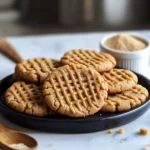
Chewy Peanut Butter Cookie Recipe: Soft and Delicious!
- Total Time: 25 min
Description
These Chewy Peanut Butter Cookies are the perfect balance of soft and chewy with just the right amount of peanut butter flavor. Whether you enjoy them with a glass of milk or as a snack, they’re sure to satisfy your sweet tooth!
Ingredients
-
1 cup unsalted butter, softened
-
1 cup peanut butter (creamy or chunky)
-
1 cup granulated sugar
-
1 cup packed brown sugar
-
2 large eggs
-
1 teaspoon vanilla extract
-
2 1/2 cups all-purpose flour
-
1 teaspoon baking soda
-
1/2 teaspoon salt
-
1/2 cup granulated sugar (for rolling the dough)
Instructions
1️⃣ Preheat the Oven:
-
Preheat your oven to 350°F (175°C). Line two baking sheets with parchment paper or lightly grease them.
2️⃣ Make the Cookie Dough:
-
In a large bowl, cream together the softened butter, peanut butter, granulated sugar, and brown sugar until light and fluffy. This should take about 3-4 minutes with an electric mixer.
-
Add the eggs one at a time, mixing well after each addition. Then stir in the vanilla extract.
3️⃣ Combine Dry Ingredients:
-
In a separate bowl, whisk together the flour, baking soda, and salt.
4️⃣ Mix Wet and Dry Ingredients:
-
Gradually add the dry ingredients to the wet ingredients, mixing until combined. Be careful not to overmix, or the cookies may become tough.
5️⃣ Form the Cookies:
-
Roll the dough into 1-inch balls and then roll each ball in granulated sugar (this gives the cookies a slightly crispy outer texture).
-
Place the dough balls about 2 inches apart on the prepared baking sheets.
6️⃣ Flatten the Cookies:
-
Using a fork, press each cookie down gently, creating a crisscross pattern on top. This will help the cookies spread and bake evenly.
7️⃣ Bake the Cookies:
-
Bake for 8-10 minutes, or until the edges are lightly golden. The centers should be soft, but they will firm up as they cool.
8️⃣ Cool and Serve:
-
Let the cookies cool on the baking sheets for about 5 minutes before transferring them to a wire rack to cool completely.
Notes
-
Peanut Butter Types: You can use either creamy or chunky peanut butter, depending on your preference for texture. Creamy peanut butter will give you a smoother dough, while chunky will add some crunch to the cookies.
-
Make-Ahead Tip: You can refrigerate the cookie dough for up to 24 hours before baking. This will help prevent the cookies from spreading too much and give them a thicker, chewier texture.
-
Storage: Store the cookies in an airtight container at room temperature for up to a week. These cookies also freeze well, so feel free to freeze them for later enjoyment!
-
Add-Ins: If you want to add a twist, mix in some chocolate chips, chopped peanuts, or even a swirl of caramel for an extra layer of flavor.
- Prep Time: 15 min
- Cook Time: 10 min


